Today, the city of Bamberg has thirteen breweries that brew a total of around 50 different beers. If you add the district of Bamberg, the beer cosmos expands by another 60 breweries with a good 300 beer creations. And the trend is upward. Creativity, whether in the traditional breweries or in new microbreweries, is gladly lived out in special brews. But first a look at history.
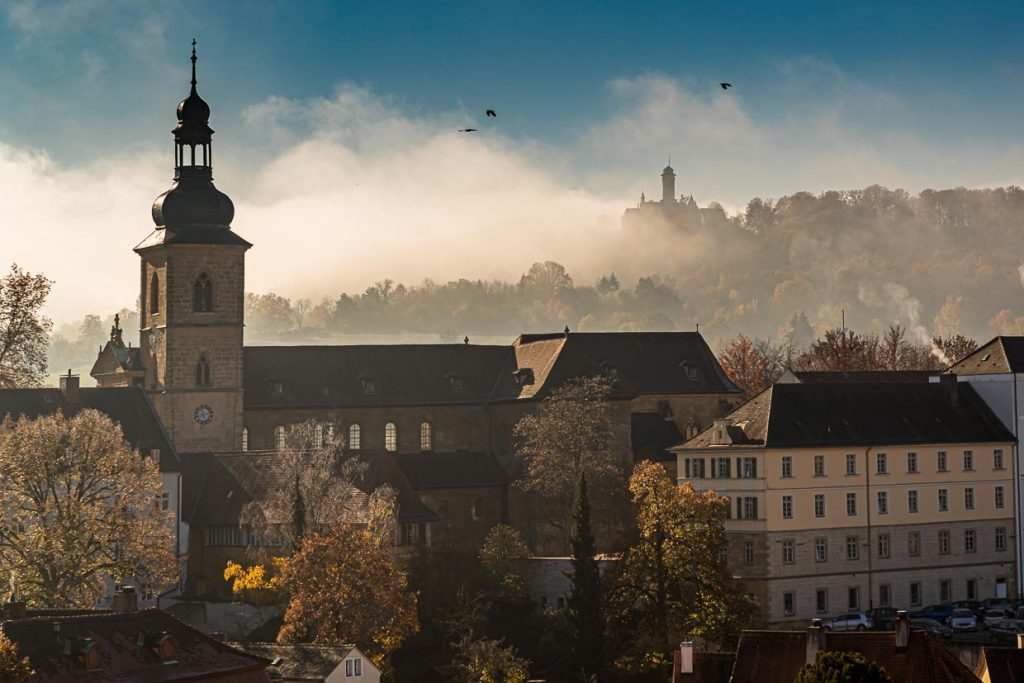
A very special brew full of brewery stories
In Bamberg, too, beer brewing began in the monasteries. Think of the many beers and pubs that are still called Klosterbräu today. Later, beer brewing became a typical bourgeois trade. The brewing right was granted in Bamberg by the prince-bishop. But it was not tied to persons, but to house and property.
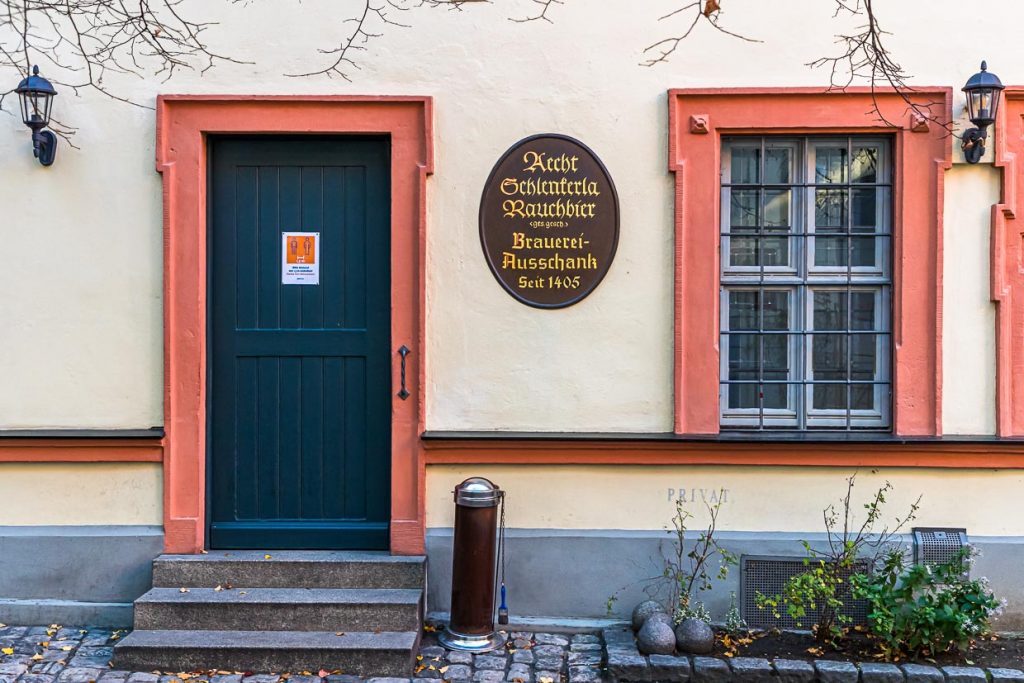
The documented brewing right meant that beer was brewed at one and the same location for centuries, even with changing owners. With regard to the famous Purity Law, Bamberg can boast a superlative. As early as 1489, the prince-bishop of Bamberg specified the ingredients for beer. Only malt, hops and water were to be used for its production. It was not until 1516 that the Bavarian Purity Law was written, a full 27 years later.
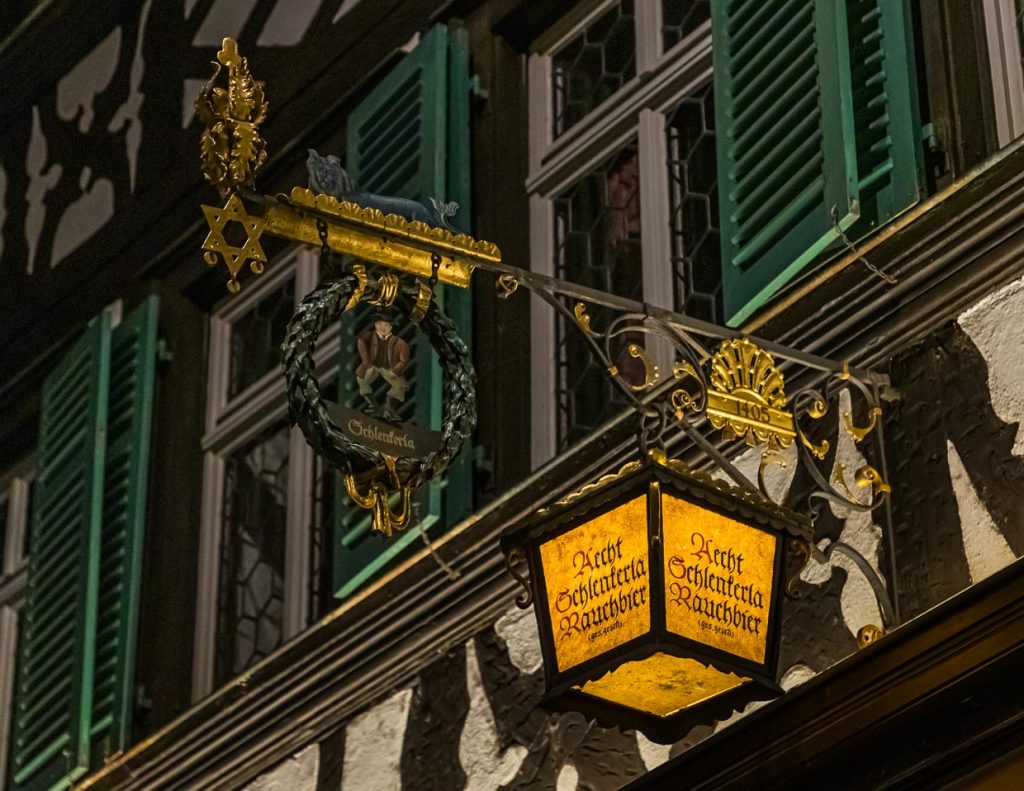
Bamberger Rauchbier – A beer legend
The history of Bamberger Rauchbier is almost 1,000 years old. In earlier times, beer had a distinct smoky taste, without exception and not only in Bamberg. This is because in our latitudes the malt could not be dried without smoke. Only since smoke-free drying technology was introduced in England in the first half of the 19th century did smoked beer become a speciality. From the 1930s onward, the Bamberg breweries Schlenkerla and Spezial were the only ones to remain true to smoked beer. Both breweries have their own smoke kiln. In this way, they turn the beer into a local specialty using an old production method.
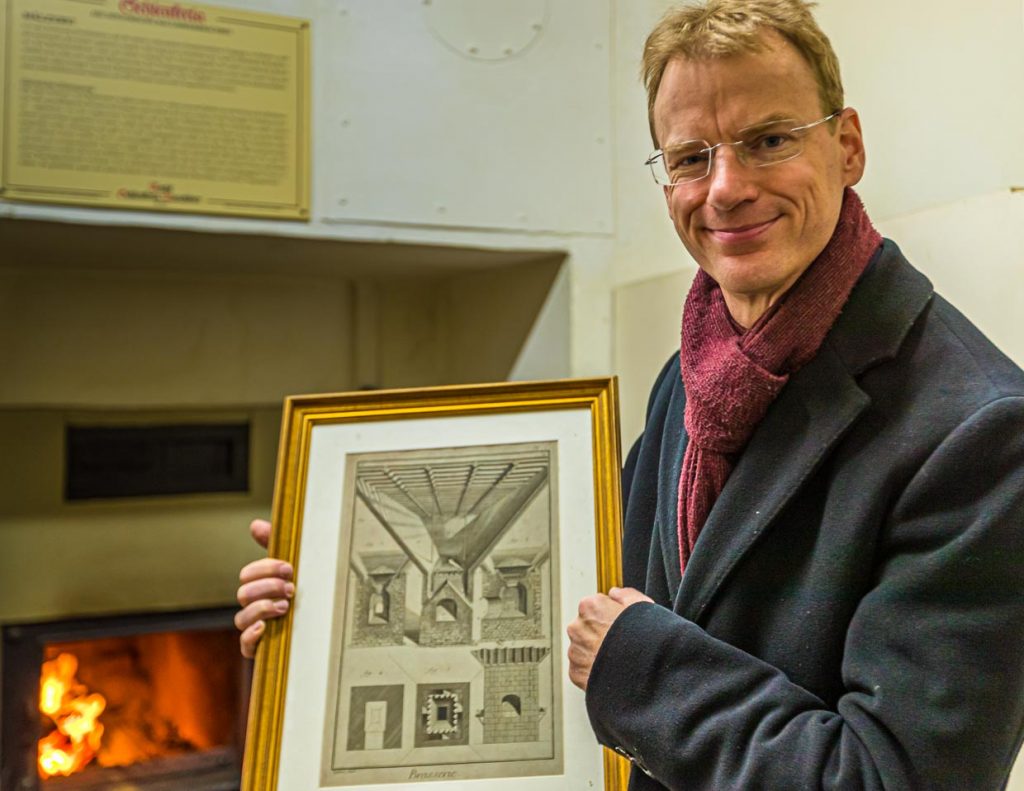
How does the smoke get into the beer?
The so-called green malt is responsible for the distinctive smoky flavor. In the brewing process, it is dried on the kiln after soaking and germination. It is dried by the hot smoke of an open beechwood fire in the brewery’s own smoke kilns. The smoke penetrates the green malt and in the further brewing process the smoke aromas are released into the beer.
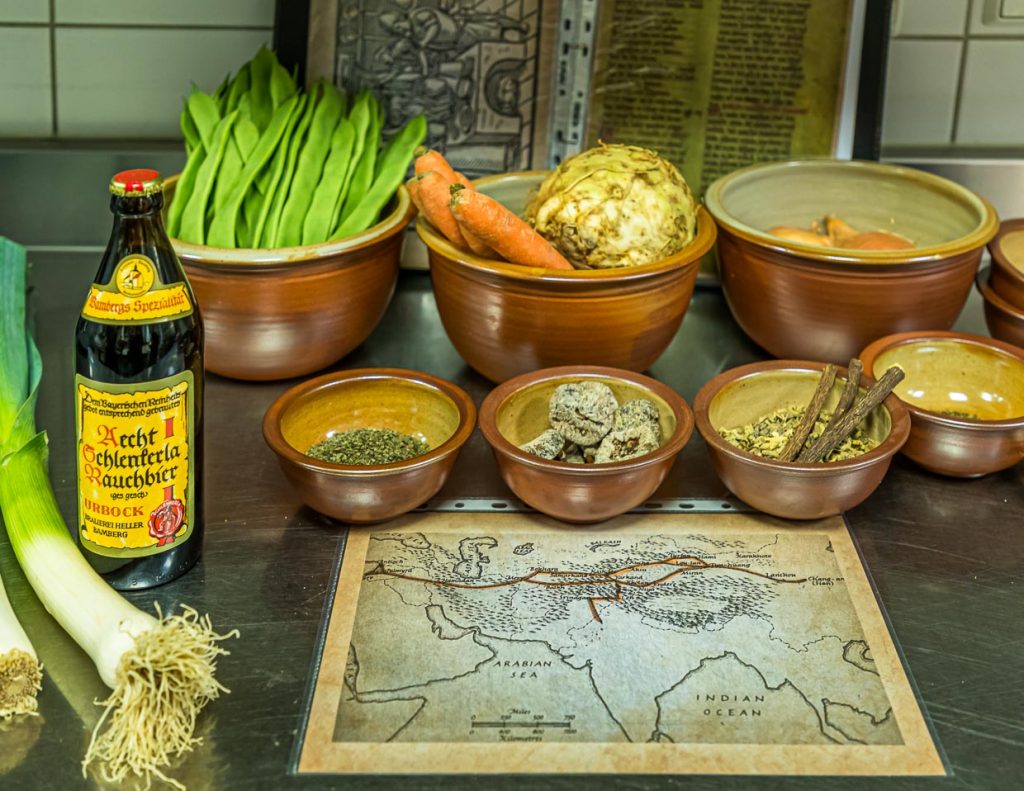
Smoked beer all year round
The traditional Bamberg smoked beer produced with this smoked malt is available at the Schlenkerla brewery all year round and also in special brews. It starts in February with the Aecht Schlenkerla Lent Beer. The tapping of the full-bodied Lenten beers takes place on Ash Wednesday. This tradition originated in the monastery and is a rather clever interpretation of the monks. For it was true that what is liquid does not break a fast. Accordingly, the Lenten beers were more substantial to counteract the lack of solid food.
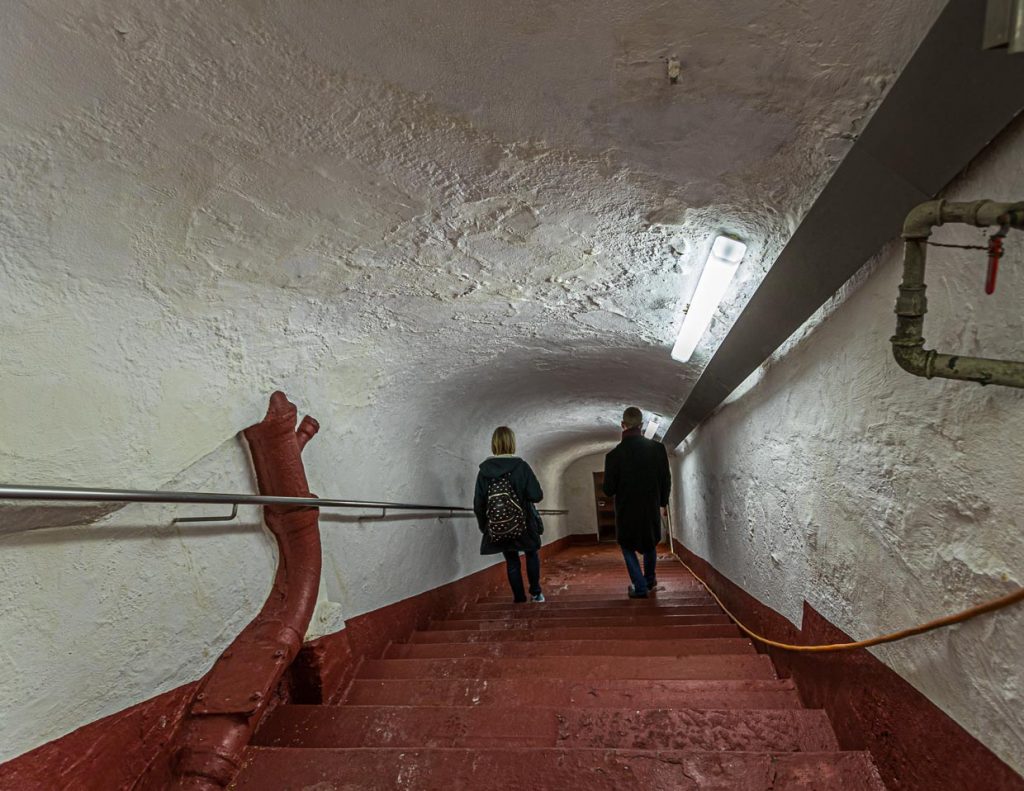
From May to September goes the beer cellar season. Cellar beers are light summer beers. Schlenkerla then serves Aecht Schlenkerla Kräusen from the wooden barrel. October and November are the times of the Bockbier tastings. The Schlenkerla then celebrates the tapping of the Aecht-Schlenkerla Rauchbier Urbock.
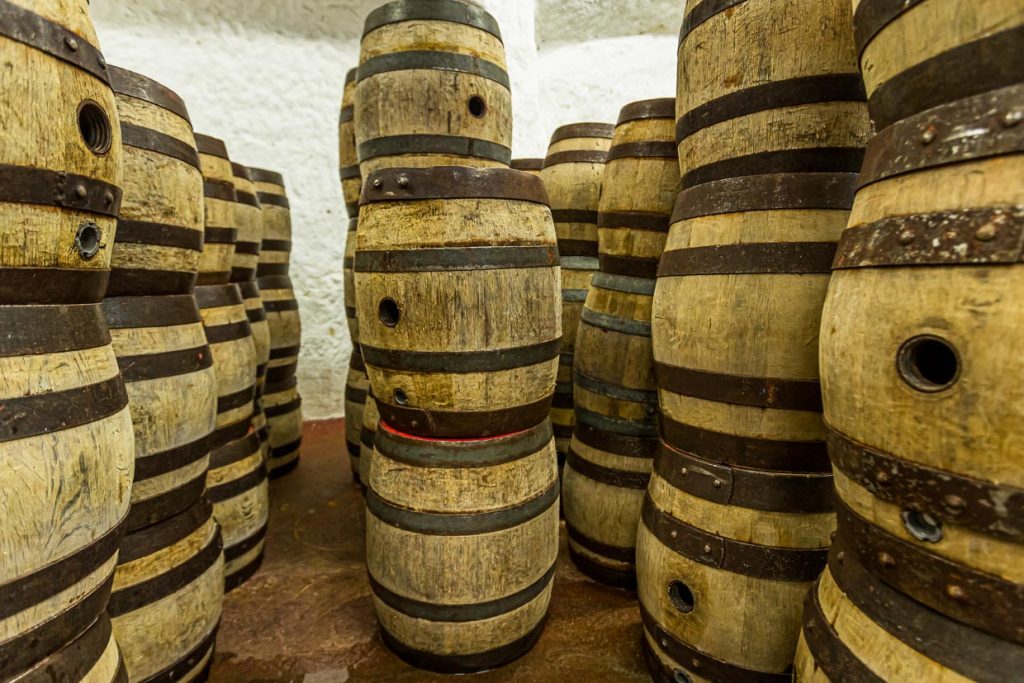
The Bierothek with beer variety from Franconia and the world
In the 19th century, there were still over 60 breweries in Bamberg. With industrialization, this number declined. But for some years now, the trend has been moving in the other direction again. Craft-brewed, well-made beer is finding more and more fans. Young brewers are entering the industry. One of these younger success stories is Bierothek. It was founded in 2014 and already in 2016 David Hertl from the Hertl Brewery in the Bamberg region took over.
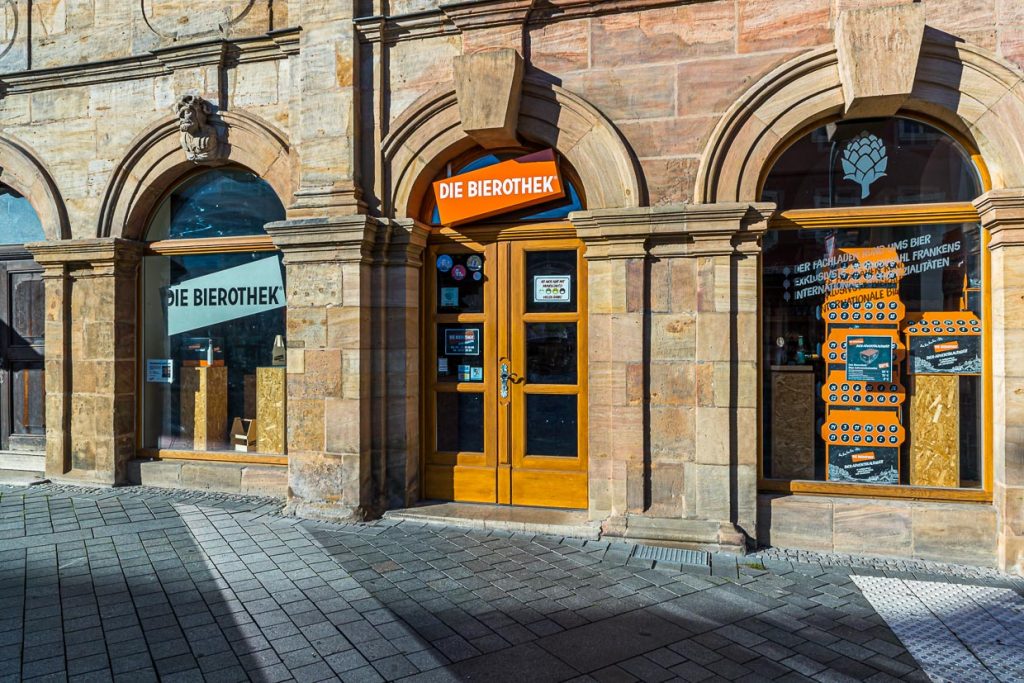
In 2021, there are already 16 beer stores in the franchise system nationwide. Here you can buy pretty much every type of beer brewed on the globe. David Hertl has around 350 varieties in his range. Of these, 20 percent are in constant rotation. Sometimes a variety doesn’t do so well, sometimes it does too well, sometimes it’s a special brew, then it’s a case of what’s gone is gone. New varieties are constantly being added, including many from the very active Franconian brewing scene, of which there are over 100 varieties in the Bierothek Bamberg. Of course, there are also the varieties from the Hertl brewery.
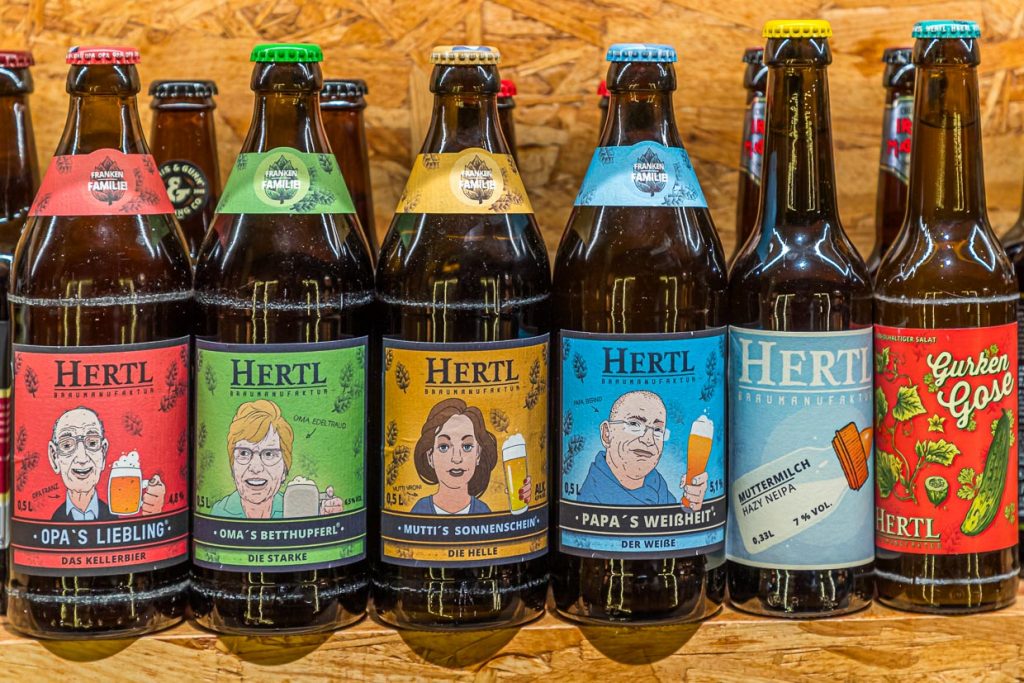
David Hertl’s father is a winemaker, but his son’s heart has been in beer ever since he set eyes on a brew kettle at the age of 15. The small Hertl brewery now produces over 40 different varieties a year. Among them are very seasonal products such as a beetroot beer or, in the fall, Drunken Pumkin beer from a can. In summer, the refreshing cucumber beer called Gurken Gose goes down well. It goes well with light dishes like fish and salad. David Hertl is not only a master brewer and maltster, but has also trained as a beer sommelier. This helps in advising the Bierothek’s customers on their choice of beer from the huge range on offer.
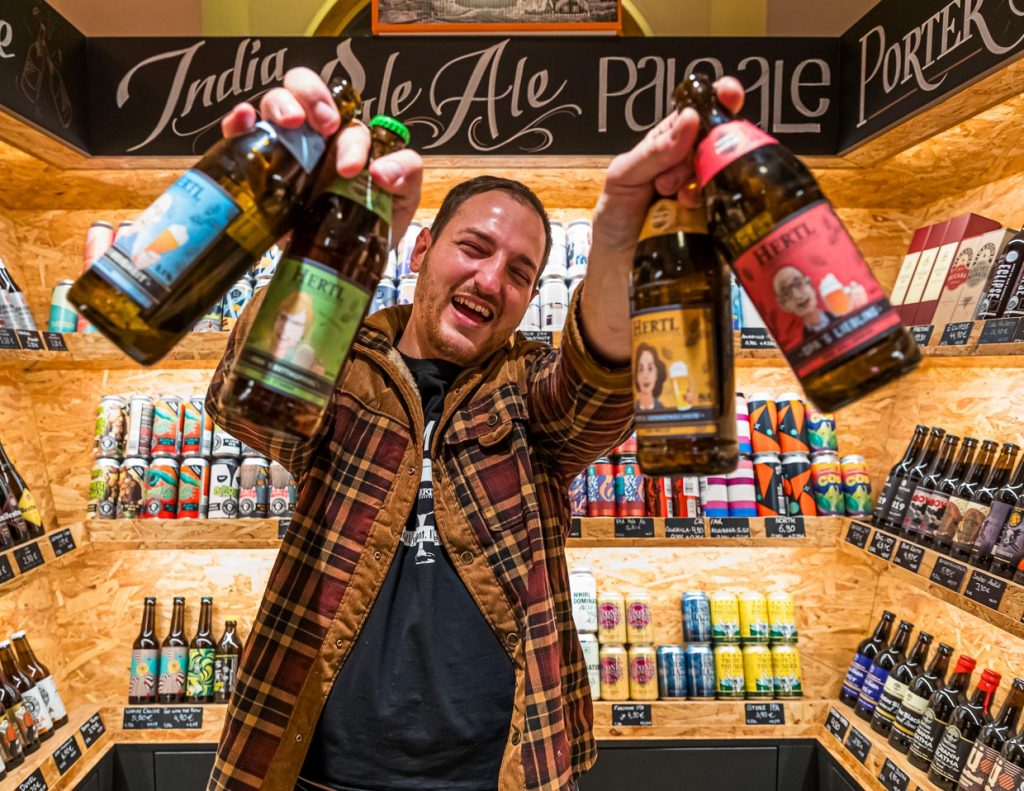
Bamberg also satisfies the thirst for knowledge
The possibilities of approaching the topic of beer in Bamberg or enriching one’s own half-knowledge through well-founded training seem unlimited. For example, it is possible to book a beer connoisseur tour with a beer sommelier. On one’s own, beer gourmet tours through the Bamberg brewery scene can be undertaken. Numerous enjoyment seminars are also offered by the Weyermann malt house, an institution in Bamberg and world market leader in the field of specialty malts. The German Beer Academy is also based in Bamberg. And those who want to have their own thirst for knowledge certified can also train as beer sommeliers in Bamberg.
Book tip
Fittingly at a time when people are looking for destinations that aren’t quite in the spotlight, Dumont has published a travel guide called Germany’s Underrated Cities. The list is headed by B for Bamberg, M for Mannheim and T for Trier. The travel tips each provide enough arguments for an exciting city trip.
DuMont illustrated book: Germany’s underrated cities, ISBN-13 : 978-3770188697
The research trip was supported by Bamberg Tourismus

